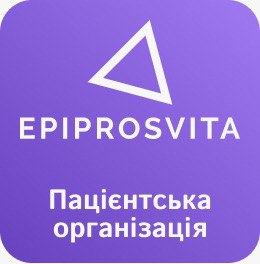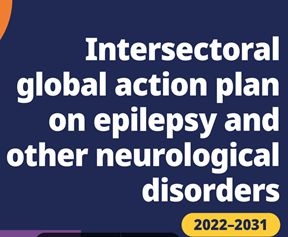Seizure 2020, Vol 80, Editor’s Choice: The role of chronobiology in drug-resistance epilepsy: The potential use of a variability and chronotherapy-based individualized platform for improving the response to antiseizure drugs
For many people with epilepsy, the unpredictability of their seizures is a particularly disabling aspect of the condition. It is primarily because of this unpredictability that activities have to be restricted, certain jobs become impossible or people may not be allowed to drive a motor vehicle. However, several recent studies have demonstrated that – surprisingly often – epileptic seizures are not an entirely random occurrence. Leaving aside those who are able to identify (and avoid) particular seizure triggers, these studies suggest that the likelihood of seizure occurrence often follows a steady pattern raising the possibility that the risk of seizures could be forecast, similarly to the risk of rain. While the majority of epilepsies have been shown to be subject to some degree of diurnal variation (1), seizures stick very closely to a predictable pattern in 10 or 20% of patients (who have often not noticed this) (2).
My Editor’s Choice paper from the current issue of Seizure is an article by Assaf Potruch, Salim T. Khoury and Yaron Ilan (3). I their wide-ranging narrative review Potruch et al. initially consider the currently recognized mechanisms for the pharmacoresistance of epilepsies before exploring how natural body rhythms could be harnessed to improve the responsiveness to treatments – including the antiepileptic drugs already at our disposal today. Similarly to researchers attempting to treat currently incurable conditions with existing but repurposed drug treatments for other disorders, they propose using interventions we already have in our arsenal, but using them in a much more targeted way by observing and taking account of the natural brain and body rhythms and by avoiding potential iatrogenic effects of regular drug dosing potentially including the loss of effectiveness. Potruch et al. argue that our exisiting antiseizure treatments could be much more effective if they were delivered in a more targeted fashion, especially at precisely the time they are needed. Given that epilepsy is a highly heterogenous condition an ideal chronobiologically informed treatment would take account of a broad range of specifics characterizing a person’s epilepsy and also monitor their brain and body rhythms. Some of these ideas are not new but the closed-loop deep brain stimulation systems now used routinely in some countries contain the technology that makes the detection of the rhythms which co-determine the timing of seizures much more feasible. Perhaps this technology could be repurposed to administer individually optimized pharmacological treatments in the future.
References:
1) Quigg M. Circadian rhythms: interactions with seizures and epilepsy. Epilepsy Res 2000;42:43-55
2) Karoly PJ, Goldenholz DM, Freestone DR, et al. Circadian and circaseptan rhythms in human epilepsy: a retrospective cohort study. Lancet Neurol 2018;17:977-85.
3) Potruch A, Khoury ST, Ilan Y. The role of chronobiology in drug-resistance epilepsy: The potential use of a variability and chronotherapy-based individualized platform for improving the response to antiseizure drugs. Seizure 2020; 80: 201-211
Seizure 2020, Том 80, Вибір редактора: Роль хронобіології у у лікуванні фармакорезистентної епілепсії: потенційне використання варіабельності та індивідуалізованої платформи на основі хронотерапії для покращення реакції на антиепілептичні препарати
Для багатьох людей з епілепсією непередбачуваність їх нападів є особливо неприємним аспектом стану. Передусім через цю непередбачуваність потрібно обмежувати діяльність, певні професії забороняються, таким людям не дозволяють керувати автотранспортом. Однак кілька недавніх досліджень показали, що епілептичні напади – на подив часто – не є повністю випадковим явищем. Залишаючи осторонь тих, хто здатний виявити (і уникнути) конкретних тригерів нападів, ці дослідження припускають, що ймовірність виникнення нападів часто слідує стійкій схемі, що збільшує можливість прогнозування ризику нападів, аналогічно ризику дощу. Хоча було показано, що більшість епілепсій піддаються деякій мірі добової варіабельності (1), напади дуже близькі до передбачуваного патерну у 10% або 20% пацієнтів (які часто цього не помічали) (2).
Мій редакційний вибір з поточного журналу «Напад» - це стаття Assaf Potruch, Salim T. Khoury та Yaron Ilan (3). У їх широкому огляді спочатку були розглянуті відомі на даний момент механізми фармакорезистентності епілепсії, перш ніж вивчити, як природні ритми тіла можна використати для покращення чутливості до методів лікування - включаючи антиепілептичні препарати, які вже є у нас в розпорядженні. Подібно дослідникам, які намагаються лікувати у даний час невиліковні стани за допомогою існуючих, але перепрофільованих медикаментозних методів лікування інших розладів, вони пропонують використовувати втручання, які вже є в нашому арсеналі, але використовувати їх набагато більш цілеспрямовано, спостерігаючи і беручи до уваги природні ритми мозку і тіла та уникаючи потенційних ятрогенних ефектів регулярного дозування ліків, потенційно включаючи втрату ефективності. Potruch та співавт. стверджують, що наші існуючі антиепілептичні методи лікування могли б бути набагато більш ефективними, якби вони здійснювалися більш цілеспрямовано, особливо в той час, коли вони необхідні. Враховуючи, що епілепсія є вкрай гетерогенним станом, ідеальне хронобіологічне обґрунтоване лікування повинно враховувати широкий спектр особливостей, що характеризують епілепсію у людини, а також контролюють його мозкові і тілесні ритми. Деякі з цих ідей не є новими, але системи глибокої стимуляції мозку із замкнутим циклом, які зараз використовуються в деяких країнах в рутинній практиці, містять технологію, яка робить виявлення ритмів, що визначають час нападів, набагато більш можливим. Можливо, в майбутньому цю технологію можна буде використовувати для проведення індивідуально оптимізованих фармакологічних втручаннь.
References:
1) Quigg M. Circadian rhythms: interactions with seizures and epilepsy. Epilepsy Res 2000;42:43-55
2) Karoly PJ, Goldenholz DM, Freestone DR, et al. Circadian and circaseptan rhythms in human epilepsy: a retrospective cohort study. Lancet Neurol 2018;17:977-85.
3) Potruch A, Khoury ST, Ilan Y. The role of chronobiology in drug-resistance epilepsy: The potential use of a variability and chronotherapy-based individualized platform for improving the response to antiseizure drugs. Seizure 2020; 80: 201-211





